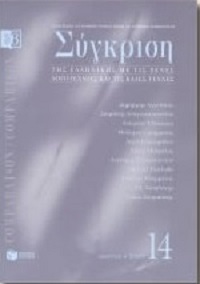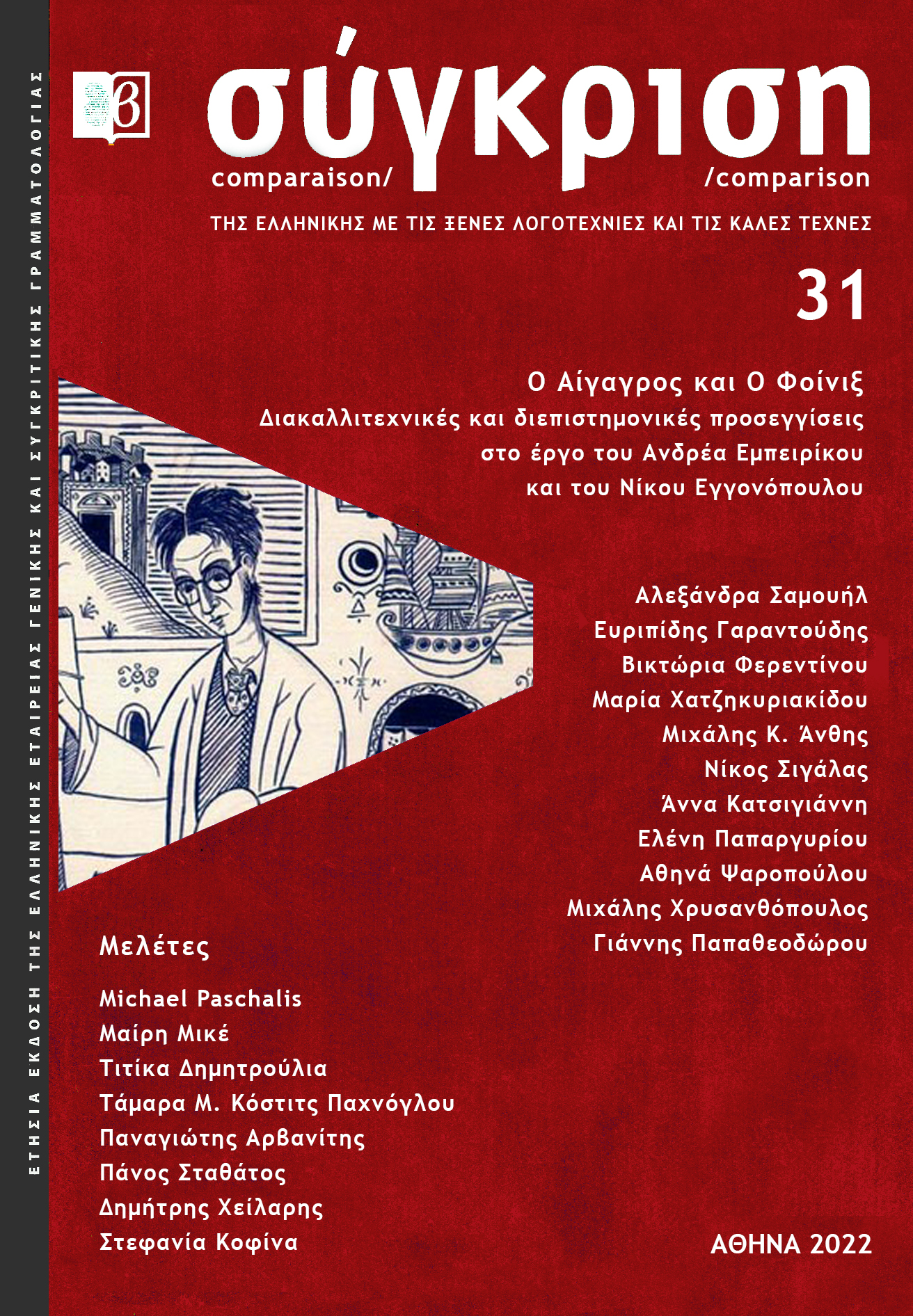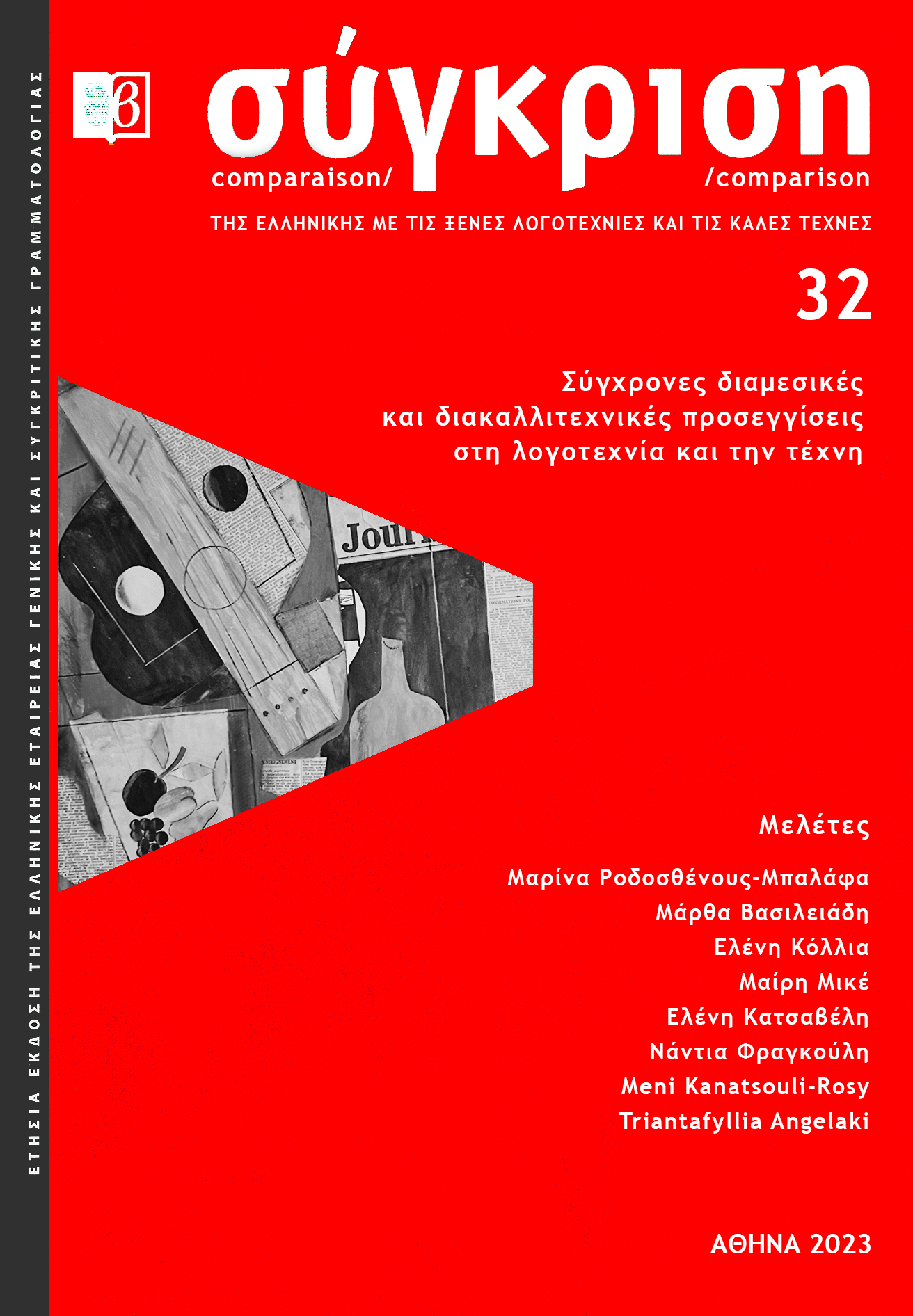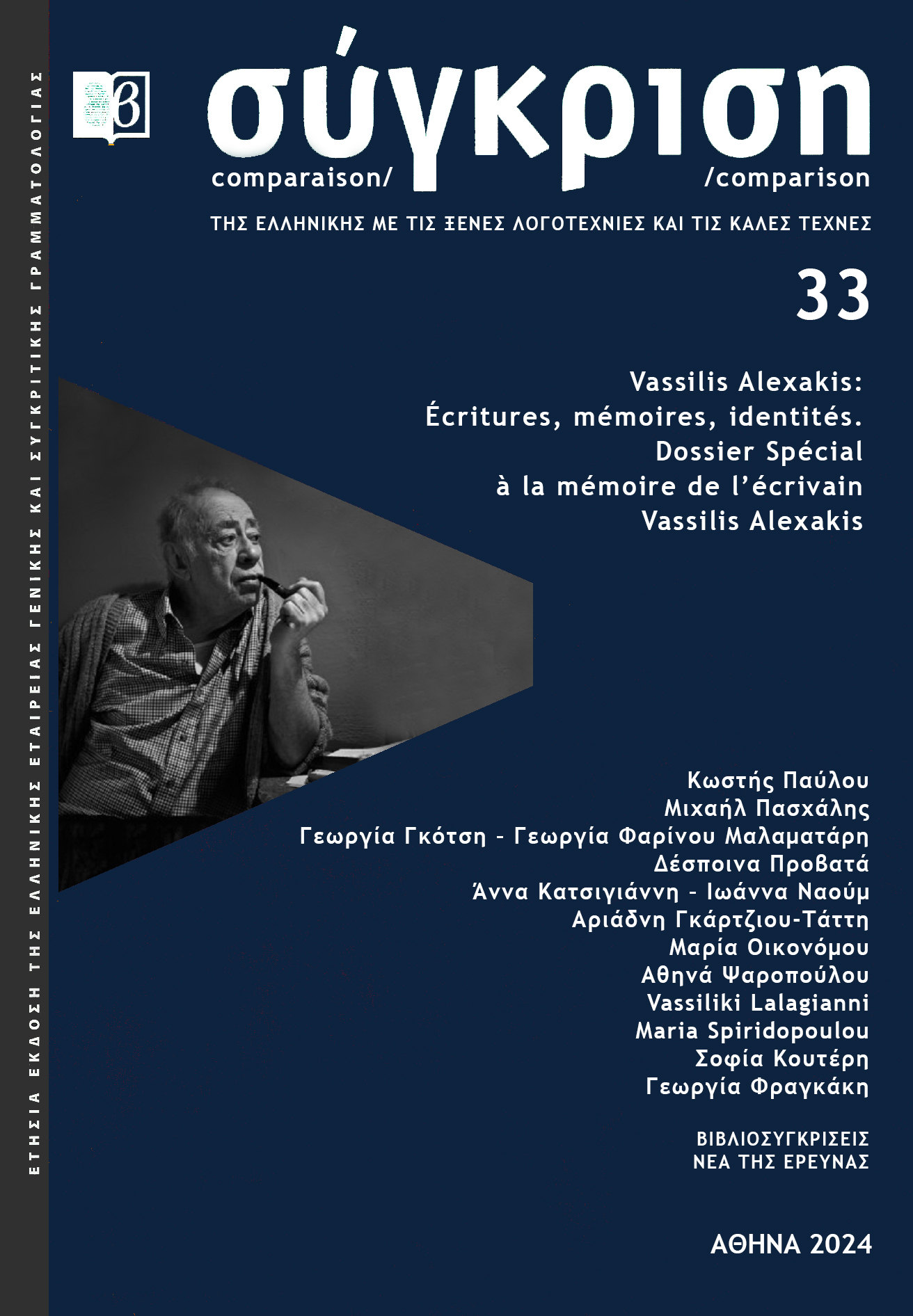Διακαλλιτεχνικές προσεγγίσεις στην ποίηση και τη ζωγραφική: η εικαστική ποιητική της Νατάσας Χατζηδάκι
Abstract
Approches inter-artistiques en poésie et en peinture: la poétique picturale de Natasa Hatzidaki
Notre approche, méthodologiquement orientée dans le champ inter-artistique de la recherche comparative contemporaine, se concentre sur le caractère pictural du discours poétique, ou plutôt sur la convergence des réalités verbales et visuelles/picturales, qui exprime le choix poétique et artistique dominant dans les poèmes de Natasa Hatzidaki, réunis en cinq recueils (quatre entre 1971-1990, un en 2017 à titre posthume). Cette convergence met en évidence le fil à multiples facettes qui relie les poèmes ci-dessus aux conquêtes du surréalisme en peinture, principalement à celles de Max Ernst. C’est ainsi que l'analyse et l'interprétation des poèmes de Natasa Hatzidaki passe précisément à travers de leurs connexions avec des œuvres de Max Ernst, composées selon la ligne de decalcomania dans les années 1939-1941/1942, tels que sont par exemple, Le fascinant cyprès (1940) et l’Épiphanie (Dream Landscape) (1940).
Article Details
- How to Cite
-
Αγγελάτος Δ. (2020). Διακαλλιτεχνικές προσεγγίσεις στην ποίηση και τη ζωγραφική: η εικαστική ποιητική της Νατάσας Χατζηδάκι. Comparison, 28, 86–97. https://doi.org/10.12681/comparison.23927
- Issue
- Vol. 28 (2019)
- Section
- Articles

This work is licensed under a Creative Commons Attribution-NonCommercial-ShareAlike 4.0 International License.
Authors who publish with this journal agree to the following terms:
- Authors retain copyright and grant the journal right of first publication with the work simultaneously licensed under a Creative Commons Attribution Non-Commercial License that allows others to share the work with an acknowledgement of the work's authorship and initial publication in this journal.
- Authors are able to enter into separate, additional contractual arrangements for the non-exclusive distribution of the journal's published version of the work (e.g. post it to an institutional repository or publish it in a book), with an acknowledgement of its initial publication in this journal.
- Authors are permitted and encouraged to post their work online (preferably in institutional repositories or on their website) prior to and during the submission process, as it can lead to productive exchanges, as well as earlier and greater citation of published work (See The Effect of Open Access).










